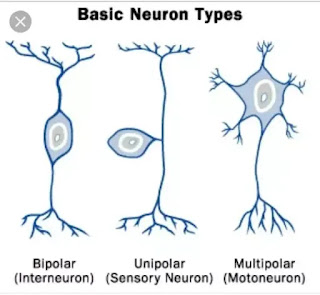Written by Anjani Mishra
Nervous System
One should be cognizant of the fact that the nervous
system, for the convenience sake, has been divided into a number of segments or
portions which at times are not distinct either anatomically or
physiologically. However, for ease of description and discussion the following
definitions are given.
The nervous system is a complex
mechanism by which the organism is brought into functional relation with its
environment, and its various parts are coordinated.
The central nervous system (CNS) can be
defined as consisting of the brain and spinal cord.
The peripheral nervous system (PNS)
includes those nerves that are connected to the central nervous system (CNS).
The peripheral nervous system is made up of the cranial and spinal nerves and
the so called autonomic nervous system, which is a component part of both
cranial and spinal nerves.
The term “autonomic nervous system” refers to
the parts of the nervous system that regulate visceral structures that are involuntary
and autonomic in nature, and thus includes the regulation of cardiac muscle,
smooth muscle and glands. In general autonomic nervous system is largely
concerned with those processes of secretion, digestion, excretion, contraction
of smooth muscle and reproduction.
Ganglia
- Ganglia are gray masses found on the dorsal root of the spinal nerves and on the course of many nerves.
- They are commonly ovoid in form, but are irregular in shape.
- They vary greatly in size; some are microscopic, while others are macroscopic. (several inches long).
- They are enclosed in a fibrous capsule. They are composed largely of the cell bodies of neurons and are located outside or peripheral part of the central nervous system.
- In origin and function the spinal ganglia belong properly to the central nervous system, but it is customary to include them with the peripheral part in gross anatomical description.
The neurons of the brain, spinal
cord and autonomic ganglia are multipolar. The neurons of the spinal
ganglia and the ganglia of certain cranial nerves are unipolar, that is
they have only one process. This process divides into two branches, one which
conduct impulses from sensory endings towards the cell body and another which
conveys these impulses to the brain or spinal cord. The ganglia of the inner
ear, retina of the eye and the olfactory mucous membrane have
neurons which have two processes and are classified as bipolar. One process
conduct towards and other away from the cell body.
The cell body of a neuron is variable in shape,
usually containing a pale nucleus and a central nucleolus with cytoplasm characterized
by stainable granules, Nissl bodies.
The term “neurofiber” is often used to
include an axon and its various sheaths.
A myelinated nerve fiber presents a myelin
sheath, where as non-myelinated fiber lacks a myelin sheath.
The gray matter of the central nervous system (CNS)
contains cell bodies and fibers that, for the most part, are not myelinated.
However, the white matter contains a large number of myelinated fibers and a
few nerve cells. White matter is white because of its higher content of myelin
sheath.














Post a Comment